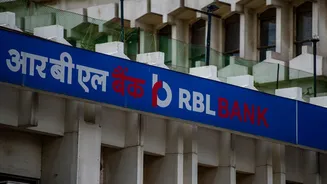RBI's Strategic Outlook
The Reserve Bank of India (RBI) is often at the forefront of shaping the nation's financial landscape, particularly when it comes to influencing interest
rates. According to recent reports, the RBI is likely to implement a series of interest rate cuts within this year. This indicates a proactive approach by the central bank to manage economic growth and stability. The primary reason for such a move is to give a boost to the credit demand within India's economy. Lowering interest rates is a time-tested strategy used to encourage borrowing, which, in turn, can spur investments, business expansions, and ultimately, an upswing in overall economic activity. The central bank's decisions are based on intricate assessments of economic factors. These include inflation rates, industrial output, and global economic trends. The RBI continuously assesses the economic data and adjusts its monetary policy to achieve a fine balance between growth and price stability, which is essential for sustainable economic progress. The decision to cut rates would also suggest the RBI anticipates that current economic conditions are suitable for such stimulus. The goal is to stimulate spending and investment by making credit more affordable, potentially resulting in positive economic growth. It's a strategic move that involves carefully evaluating economic indicators and projecting their potential impact on the national economy.
Boosting Credit Demand
At the core of the RBI's anticipated interest rate cuts lies the goal of bolstering credit demand within the Indian economy. Reduced interest rates act as a catalyst by making borrowing more affordable for individuals and businesses. When the cost of borrowing decreases, more people and companies are motivated to apply for loans. This increased borrowing leads to a surge in credit demand. This effect plays a crucial role in stimulating economic activity. When businesses can access credit easily and at lower costs, they're more inclined to invest in expansion plans. This investment includes hiring additional staff, procuring new equipment, and enhancing operational capabilities. Furthermore, individuals often take advantage of lower interest rates to buy homes, cars, or other significant purchases. This activity also contributes to economic growth, which is fueled by increased consumption and investment. The intention is to make borrowing attractive, providing opportunities for businesses and consumers to grow and invest, ultimately supporting a more robust and dynamic economic environment. The RBI carefully monitors how these lower rates influence various sectors, to assess the success of the policy and make suitable adjustments.
Impact on Businesses
Businesses are expected to be among the primary beneficiaries of the RBI's likely move to lower interest rates. The availability of more affordable credit can dramatically transform business operations and strategies. With lower borrowing costs, businesses gain more financial flexibility. This helps them with expansion initiatives, like funding new projects, enhancing infrastructure, and penetrating new markets. Moreover, lower interest rates reduce the burden of existing debts, freeing up cash flow that can be reinvested into the business. This may include innovation, research and development, and the adoption of cutting-edge technologies. Businesses can also utilize lower rates to manage their working capital more efficiently, ensuring smoother operational processes. Another critical aspect is the impact on competitiveness. Lower borrowing costs enable businesses to price their goods and services more competitively. This can lead to increased sales and market share. This, in turn, creates a favorable economic cycle where growth is fueled by strategic investments and improved profitability. Overall, the reduction in interest rates offers a significant advantage to Indian businesses, enabling them to expand, innovate, and contribute more effectively to national economic growth.
Consumer Benefits Considered
Consumers are also poised to gain from the anticipated interest rate cuts by the RBI. One of the most direct benefits is in the form of cheaper loans for purchasing items like homes and vehicles. Lower interest rates on home loans, for instance, can lead to reduced monthly EMIs, making homeownership more accessible and affordable for a broader demographic. Similarly, lower rates on auto loans can boost vehicle sales and related industries. This will give people the option to upgrade their homes and cars, boosting the confidence of consumers and contributing to greater economic activity. Apart from specific loans, consumers also benefit from increased disposable income due to lower interest payments on existing debts. This additional money can be utilized for various purchases, contributing to higher consumer spending, which is a major driver of economic growth. Furthermore, lower interest rates often result in increased investment in other assets, like mutual funds and bonds, which provides long-term financial security for households. These collective advantages contribute to consumer confidence, which plays a major part in driving overall economic expansion. Thus, consumer benefits are central to the RBI's strategy to stimulate broad-based economic growth through its monetary policies.
Economic Growth Outlook
The potential impact of the RBI's decision to cut interest rates is a promising outlook for overall economic growth. Lower rates can set off a chain reaction of positive effects across various sectors. The initial boost comes from increased credit demand, which then spurs investment and consumption. This increased economic activity leads to greater demand for goods and services, which then encourages businesses to expand and hire more employees, reducing unemployment. Furthermore, the increased economic activity generally boosts business and consumer confidence, which reinforces the cycle of growth. The financial markets also respond positively to the expectation of rate cuts. This might lead to higher stock valuations and increased investment in the stock market. However, the RBI carefully manages potential downsides, such as inflationary pressures that could arise from excessive money supply. The central bank closely monitors key economic indicators, including GDP growth, inflation, and employment data, to ensure that the interest rate policy remains aligned with the needs of a healthy economy. These assessments help in maintaining a balance between economic expansion and price stability, which is essential for ensuring that economic growth remains sustainable and beneficial for all stakeholders.















